What determines the long-term permissible cable current
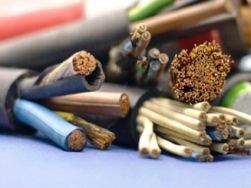 What determines the long-term permissible cable current? To answer this question, we will have to consider transient thermal processes that occur under conditions when an electric current flows through the conductor. Heating and cooling a conductor, its temperature, connection with resistance and cross-section - all this will be the subject of this article.
What determines the long-term permissible cable current? To answer this question, we will have to consider transient thermal processes that occur under conditions when an electric current flows through the conductor. Heating and cooling a conductor, its temperature, connection with resistance and cross-section - all this will be the subject of this article.
The figure shows graphs of the current and temperature in the conductor over time. From time t1 to time t3, current I flowed through the conductor. Here you can see how, after turning on the current, the temperature of the conductor gradually rises, and at time t2 it ceases to increase, stabilizes. But after turning off the current at time t3, the temperature begins to decline gradually, and at time t4 it again becomes equal to the initial value (T0). So, we can write the heat balance equation for the process of heating the conductor ...
Mechanical and electrical characteristics of induction motors
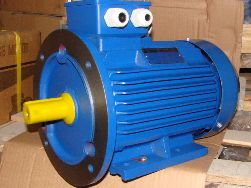 This article will highlight the topic of mechanical and electrical characteristics of electric motors. Using an asynchronous motor as an example, consider such parameters as power, work, efficiency, cosine phi, torque, angular velocity, linear speed and frequency. All these characteristics are important when designing equipment in which electric motors serve as drive motors. Especially asynchronous electric motors are especially widespread in the industry today, so we will dwell on their characteristics. For example, consider the AIR80V2U3.
This article will highlight the topic of mechanical and electrical characteristics of electric motors. Using an asynchronous motor as an example, consider such parameters as power, work, efficiency, cosine phi, torque, angular velocity, linear speed and frequency. All these characteristics are important when designing equipment in which electric motors serve as drive motors. Especially asynchronous electric motors are especially widespread in the industry today, so we will dwell on their characteristics. For example, consider the AIR80V2U3.
The nameplate (on the nameplate) of the motor always indicates the rated mechanical power on the shaft of the motor. This is not the electric power that this electric motor consumes from the network. So, for example, for an AIR80V2U3 engine, a rating of 2200 watts corresponds precisely to the mechanical power on the shaft ...
Electrical cables, wires and cords - what is the difference
 In fact, all these electrical products are designed to perform a common task: the transmission of electricity from a voltage source to a consumer. They must perform their functions for a long time and reliably without creating emergency situations and malfunctions. Wires and cables work in all fields of human practice, when it is necessary to create a closed loop for the passage of electric current, to eliminate its loss through unforeseen leaks.
In fact, all these electrical products are designed to perform a common task: the transmission of electricity from a voltage source to a consumer. They must perform their functions for a long time and reliably without creating emergency situations and malfunctions. Wires and cables work in all fields of human practice, when it is necessary to create a closed loop for the passage of electric current, to eliminate its loss through unforeseen leaks.
Due to the similarity of the issues being addressed, many ordinary people do not distinguish their differences, they belong to one category. However, cables, wires and cords operate in different operating conditions, are used on different sections of electric current mains, and differ in purpose. Therefore, they have a different internal structure and design. On electric transmission lines, there are cases when electricity is transmitted ...
Calculation of short circuit currents for beginner electricians
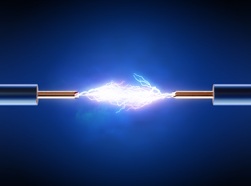 When designing any energy system, specially trained electrical engineers using technical manuals, tables, graphs and computer programs perform its analysis on the operation of the circuit in various modes, including. idling, rated load and emergency situations.
When designing any energy system, specially trained electrical engineers using technical manuals, tables, graphs and computer programs perform its analysis on the operation of the circuit in various modes, including. idling, rated load and emergency situations.
Of particular danger is the third case, when a network malfunctions occur that can damage the equipment. Most often, they are associated with “metallic” shorting of the supply circuit, when electrical resistances with a dimension of a fraction of Ohm are randomly connected between different potentials of the input voltage. Such modes are called short-circuit currents or abbreviated as "short circuit".They arise in case of malfunctions in the operation of automation and protection, errors of staff, natural disasters ...
Why modern inverters use transistors, not thyristors
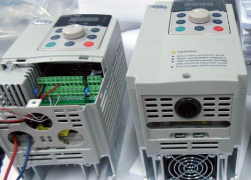 Thyristors belong to semiconductor devices of the p-n-p-n structure, and, in fact, belong to a special class of bipolar transistors, four-layer, three (or more) transition devices with alternating conductivity. The thyristor device allows it to work like a diode, that is, to pass current in only one direction. And also like a field-effect transistor, the thyristor has a control electrode. Moreover, as a diode, the thyristor has a peculiarity - without injection of minority working charge carriers through the control electrode it will not go into a conducting state, that is, it will not open.
Thyristors belong to semiconductor devices of the p-n-p-n structure, and, in fact, belong to a special class of bipolar transistors, four-layer, three (or more) transition devices with alternating conductivity. The thyristor device allows it to work like a diode, that is, to pass current in only one direction. And also like a field-effect transistor, the thyristor has a control electrode. Moreover, as a diode, the thyristor has a peculiarity - without injection of minority working charge carriers through the control electrode it will not go into a conducting state, that is, it will not open.
A simplified model of the thyristor allows us to understand that the control electrode here is similar to the base of a bipolar transistor, however, there is a limitation that unlocks the thyristor ...
What are wiring diagrams and where do they apply
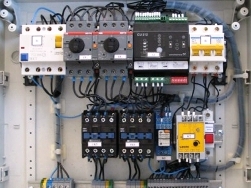 Modern electrical equipment in its work uses numerous technological processes that proceed according to various algorithms. An employee engaged in its operation, maintenance, installation, commissioning and repair, you must have reliable information about all their features. Providing the occurring events in graphical form with the designation of each element in a specific, standard way, greatly facilitates this process, allows you to transfer the intentions of developers to other specialists in an understandable form.
Modern electrical equipment in its work uses numerous technological processes that proceed according to various algorithms. An employee engaged in its operation, maintenance, installation, commissioning and repair, you must have reliable information about all their features. Providing the occurring events in graphical form with the designation of each element in a specific, standard way, greatly facilitates this process, allows you to transfer the intentions of developers to other specialists in an understandable form.
Electrical circuits are created for electricians of all specialties, have various design features. Among the methods for their classification, the division into principal and assembly is used. Both types of circuits are interconnected. They complement each other’s information, are carried out according to uniform standards ...
Polar and non-polar capacitors - what is the difference
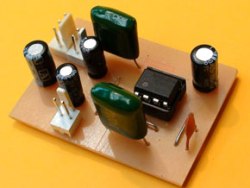 All kinds of capacitors used today almost everywhere in electronics and electrical engineering, as a dielectric contain various substances. However, with regard to specifically electrolytic capacitors, in particular also tantalum and polymer, it is important for them to include strict polarity when included in the circuit. If such a capacitor is not included in the circuit correctly, then it will not be able to operate normally. These capacitors are therefore called polar.
All kinds of capacitors used today almost everywhere in electronics and electrical engineering, as a dielectric contain various substances. However, with regard to specifically electrolytic capacitors, in particular also tantalum and polymer, it is important for them to include strict polarity when included in the circuit. If such a capacitor is not included in the circuit correctly, then it will not be able to operate normally. These capacitors are therefore called polar.
What is the fundamental difference between a polar capacitor and a non-polar one, why do some capacitors still care how to be included in the circuit, and it is fundamentally important for others to observe the polarity? We’ll try to figure it out now. The point here is that the manufacturing process of electrolytic capacitors is very different from, say, ceramic or polypropylene ...
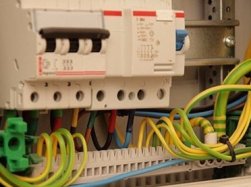 Color insulation of conductors today is an integral attribute for the successful and proper installation of electrical wiring. Such a solution is by no means a way to make the wires beautiful and attractive to the consumer, it is a convenient color marking, standardized and regulated throughout the civilized world, which is, without exaggeration, a necessity.
Color insulation of conductors today is an integral attribute for the successful and proper installation of electrical wiring. Such a solution is by no means a way to make the wires beautiful and attractive to the consumer, it is a convenient color marking, standardized and regulated throughout the civilized world, which is, without exaggeration, a necessity.
The color marking of the wires gives an exact designation to each conductor, the color of the insulation of the core marks its purpose in a group of several conductors, and facilitates the process of switching and installation. This solution eliminates errors that may occur during installation, which could lead to a fatal electric shock or short circuit. Repairing and maintaining electrical networks also becomes safer if the wires are precisely labeled ...
